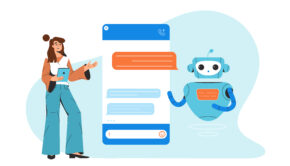Industry Trends Modern Meeting Participants Expect
Interaction, immersion, and personalization have emerged as driving forces of all types of business events, including meetings and conferences. New technologies have found their way into conferences, trade shows, and meetings worldwide. A lot of these technologies are here to stay, and not only: their popularity will only increase when 5G networks become fully operative. As this happens, meeting participants will need to cope with a lot of changes. Here are some of the main trends modern meeting participants have come to expect.
Meeting Participants Want More Control
It’s not that static meetings are disappearing – it’s that attendees are becoming more and more frustrated with having to sit through speeches and presentations. Personalization is becoming increasingly important. Participants are looking for dynamic agendas with options for different preferences and interests. Quite often, this can mean allowing them to choose topics they find interesting and including these on the agenda to increase engagement.
Every Meeting Should Have a Point
The new generation of conference and meeting participants wants fresh ideas and events with insight, meaning, and innovation. They seek elements of wellbeing, a goal, and a connection manifesting the essence of the company they work for. According to data of IACC, four out of five event planners state that their tasks focus on creating an experience much more than they did 4 years ago. One of the recent themes of IMEX America centered on the concept of “purposeful meetings”, and the conference industry is placing an ever-growing emphasis on this concept.
In Trend: Event Technologies
When we talk about industry trends, technology is front and center. Current tendencies include 5G Internet, chatbots, face recognition technology, wearables, and push notifications. Below is some more information about each of these.
Superior Wi-Fi
There’s no disputing the significance of good Wi-Fi at a meeting. Companies started rolling 5G internet out this year, and this trend will continue throughout 2020. Participants expect even remote meeting venues to offer high-quality Wi-Fi as a standard. Currently, Wi-Fi requirements are based on 3.5 devices per user!
Chatbots
Chatbots were developed to answer questions in a conversational tone, mainly via text message. They are becoming crucial to meetings because of this. Participants find quick and simple answers to any questions about event organization and logistics. In fact, the meeting chatbot system EventBots played a pivotal role in the success of the most recent MPI (Meeting Professionals International) Tech Showcase Congress.
Face Recognition Devices
Facial recognition technology facilitates a smooth check-in and registration process, helping optimize the meeting experience. We know how technical difficulties and misunderstandings at the very beginning can set the stage for a less than satisfactory overall experience. Wearables can help create attendee-centric experiences by serving as personal assistants. Push notifications provide subject-specific learning tracks or personalized agenda suggestions. Similarly, AI can increase the sophistication of interactions, for example by means of data apps to augment the effectiveness of networking.
VR-Enhanced Experiences
More and more organizers are realizing the extent, to which sensory channels impact experience. These help create relevant, immersive events. A recent trend that has emerged in this context is the use of experiences enhanced by virtual reality. Games and escape rooms are examples of this. If you combine gamification with experiential learning, your attendees will experience the full array of event aspects with emphasis on problem-solving through cooperation.
In light of the above, it’s no surprise that memorable participant experiences have become one of the priorities of modern meeting planning. The best meetings balance virtual and face-to-face elements. Shifting the focus from individuals to technology is just as detrimental as ignoring technology or not using it meaningfully. Human facilitation should not be overlooked by any means.
Facilitating an Interactive Agenda
Meeting facilitators structure agendas so everyone is involved. For example, different people are given the opportunity to lead or direct the conversation. As this happens, the facilitator listens and observes the group, focusing on propelling them toward the desired objective. This is usually either making a decision or solving a problem.
We mentioned the risk of overreliance on technology earlier; now, we’ll elaborate on that. Technology should help involve attendees in an event, but not to the extent where they lose sight of its original purpose. People are far more engaged in conferences and meetings when they’re not on their phones or laptops scrolling through their feeds. In some cases, it’s best to ask for all devices to be switched off with the exception of the scribe’s, who needs one to take minutes. A facilitator won’t start a meeting until they’ve assured themselves everyone present is ready to contribute.
How Can a Facilitator Help Improve your Meetings?
The last industry trend we’re going to discuss is meeting facilitation. Companies are increasingly turning to these professionals to improve their meetings. As the meeting gets underway, there is a host of issues that can arise. Is it going too fast? Too slow? Is everyone aware of the purpose? What outcome do the participants desire? How do we discuss touchy subjects without arguing? How do we get everyone involved?
An effective, experienced facilitator will have the answers. They will take measures to engage everyone in the discussion. Technology can be a distraction. Imagine that someone wants to voice a dissenting opinion. Would it have any effect if their teammates were busy answering emails on their computers?
If someone must work on something else during the conference or meeting, they simply shouldn’t be there. At any rate, it would be easier for them to work and the quality of their output would be better when they weren’t distracted by their coworkers talking.
Final Thoughts on Facilitation
A skilled facilitator can get a group to debate, talk, and make decisions effectively and efficiently. Most companies don’t have experienced coaches or program managers to perform this function. As technologies unite the modern, ever-more collaborative workplace, the role of facilitators in strategic planning has become of paramount importance to the outcome of meetings.
















